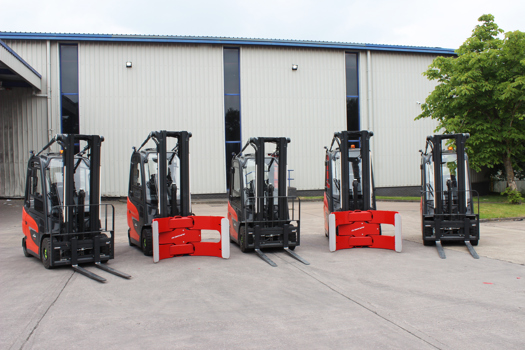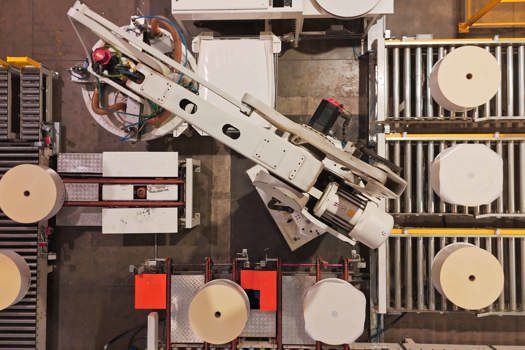However, at some point in the 1990s a sea-change occurred. Seemingly overnight there was a major shift, with products and services increasingly playing second fiddle to editorial content. Suddenly the pages of customer magazines were being filled with engaging content generated by high-profile writers and photographers, with each new magazine launch pushing the boundaries of what was possible.
The customer magazine boom has, then, provided a much-needed shot in the arm for beleaguered UK magazine printers over the past decade or so, particularly during the economic downturn. Even better, the customer magazine industry looks set, with companies starting to once again increase their marketing budgets, to enjoy another period of significant growth.
Significant sector
In the UK alone, customer magazine publishing today is a £4bn industry, according to the Content Marketing Association (CMA). And although the recession saw some titles go to the wall, there have been dozens of new magazines lining up to take their place.
To assess the value of customer magazines to UK Print PLC you need only to skim through the numbers. With 1.9m readers, Tesco Magazine has the largest circulation of any UK magazine (ABC, 2013), and five of the top 10 and 10 of the top 20 magazines in the UK are customer publishing titles, according to ABC figures, with Waitrose Kitchen magazine growing more than any other title in the last period for which circulation figures were captured. In fact, more than a third of the UK’s top 100 circulating titles are produced for brands, and 14% of customer magazines have a circulation of 250,000 or more.
Amanda Burrell, digital, events and marketing manager at the CMA, which was formerly known as the Association of Publishing Agencies, says that the past 10 years hasn’t just seen a rapid growth of awareness of these types of titles, but also significant growth in the size of marketing budget allocated to it. 20p of every £1 spent by marketers is spent on content marketing – more than any other form of marketing, says Burrell.
“What is driving this is that marketers are more aware of the effectiveness of a content strategy, as it offers long-term engagement with consumers and clients through intelligent content, which
delivers engaging relationships, consumer value and measurable success for brands,” she adds.
Burrell’s assertion is supported by market research. According to the CMA, 70% of UK consumers read at least one piece of content marketing on a monthly basis, 54% of readers of these titles have bought a product or service featured in a magazine and 80% of content marketing consumers recommend products to others. It makes for impressive reading and combined with the eye-wateringly high circulation figures typically associated with customer magazines, it’s easy to see why magazine printers are attracted to these titles.
“From a pure print and production perspective they are in the main a joy to produce because, as they are a form of marketing, the paper stock is normally of good quality and the imagery and design is excellent,” says Darren Coxon, managing director at Pensord, which won a number of new customer magazine printing contracts in 2013.
But although it may be a pleasurable print sector to work for, that’s not to say it doesn’t have its fair share of challenges. As Sam Upton, founder of content agency Soul Content, points out, customer magazines often contain vital product information, such as price and availability, which can change right up the last second, so it’s crucial that printers servicing this sector are flexible. These titles also typically have a longer and more laborious sign-off process than other forms of magazines.
“Where content for consumer titles may only require the approval of the editor, and in some cases the publisher, customer titles all have at least one person from the brand, often more, who have to sign off every word and image. This can lead to delays and last-minute changes to the schedule,” says Upton. “Also, since brand marketing is such a fast-moving industry, one-off titles will often have to be commissioned, created and printed in a very short amount of time. The brand may want to react to something in the news or something its competitors have done. Either way, it requires the finished publication in a matter of days,
not weeks.”
Due to this combination of factors it’s a discipline that requires a very specific set of skills, skills that are succinctly summed up by Kirk Galloway, managing director at Buxton Press, which has a number of customer magazine clients.
“Our contract publishing clientele is diverse, but they all have the same basic requirements: the highest standard of print, turned around in the shortest possible time and at the most cost-effective price,” he says.
For him, the key to securing customer magazine contracts is simple. “Printers winning this work are those like Buxton Press, who are investing heavily in the latest technologies to equip themselves to meet the challenging demands of the market, and who are financially robust enough to provide the stability of an uninterrupted service to a consistently high standard and at competitive prices,” says Galloway.
A strong finish
Showcasing what’s achievable with customer magazines to the brand owners themselves is also a good way for printers to enhance their chances of winning work. Unlike publishers of consumer and B2B magazines, who’ve struggled over the past few decades to attract advertisers and readers and so have often had to cut back on stock quality and other production costs, customer magazine owners typically have decent budgets for creative and experimental executions. Brand owners have realised, report many, that portraying their firm in the best light requires a quality finish.
Pensord’s Coxon says that, where appropriate, his firm encourages its customer magazine clients to push the creative boundaries. “Where possible we promote the possibilities of using cover enhancements and out-of-the-ordinary finishes. Some do get a high-end finish, but they tend to be paid for by advertisers who are looking for that something extra,” he says.
But more printers could be following Pensord and Buxton’s example, says Soul Content’s Upton. Printers need to bear in mind that, while there is a desire to produce a high-end publication within most brands, few will have much print expertise.
“In many contract publishing companies, editorial teams are kept to a bare minimum – often one designer and one editor – so there’s not the time to investigate the latest print techniques,” says Upton. “If printers could come to them armed with plenty of samples and ideas they would doubtless be rewarded with plenty of attention – and business.”
But this isn’t just about companies offering their magazine clients innovative printing techniques and solutions in isolation. Although 57% of consumers say that they prefer printed magazines to their online equivalent, according to figures compiled by US media agency TargetCast, thanks to the latest technology there’s a significant opportunity to marry the online and offline world to create an ever more compelling commercial package.
“While the communication channels are expanding, the growth of customer magazines demonstrates that print is still effective and can be used as part of an integrated cross-media campaign alongside digital technology and online communication platforms,” says Chris Aked, commercial print group marketing manager of Canon UK.
He highlights the findings of an InfoTrends study that showed that print-only campaigns achieve a response rate of 6.5%, but when print and email are used together the response rate increased to 8.3% and when print, email and web landing pages were used in conjunction with one another this figure increased to 8.8%. These response rates make compelling reading for brand owners and offer numerous potential benefits, says Aked.
“Using cross-media applications can help to convert a reader of a customer magazine into a qualified prospect and promote brand loyalty, by sustaining an integrated and evolving dialogue,” he explains. “These applications also enable the collection and updating of customer data and the tracking of campaign activities.”
This merger of print and digital media is anticipated to become even stronger in the future as marketing spend increases and growing numbers of customer magazine brand owners look to deliver ever more engaging content, believes Buxton’s Kirk Galloway.
“With the exciting opportunities provided by things like augmented reality, traditional printing is increasingly being fused with newer technologies to push the boundaries still further, which helps to keep printers on their toes. And with the additions of app solutions and enhanced digital editions, the possibilities are endless,” says Galloway. “The only limitation really is the publisher’s imagination.”










